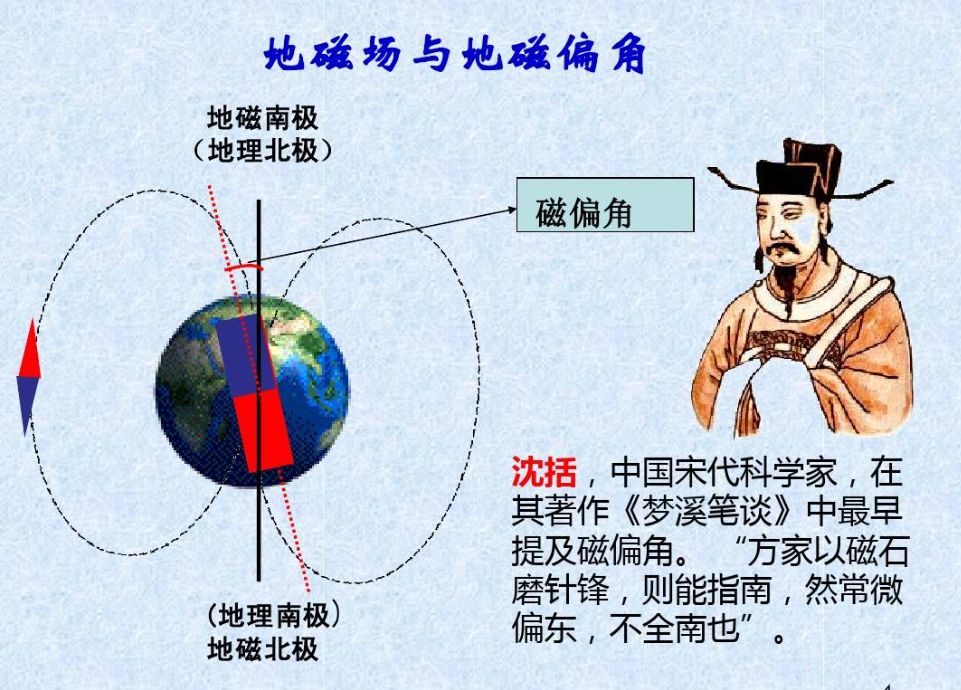Geomagnetic declination is the angle formed by the intersection of the line connecting the Earth’s North and South Pole and the line connecting the Earth’s magnetic North and South Pole. Shen Kuo, a scientist from the Song Dynasty in my country, in his “Mengxi Bi Tan” written at the end of the 11th century, pointed out when describing that rubbing a steel needle with a natural magnet can guide the direction: “However, it is often slightly to the east, but not completely south.”

This is the world’s earliest discovery of geomagnetic declination. The declination angle, magnetic inclination angle (the angle between the earth’s magnetic field and the horizontal plane), and the horizontal component of the earth’s magnetic field are called the three geomagnetic elements. Europeans discovered magnetic declination during Columbus’s maritime exploration in 1492, more than 400 years later than Shen Kuo.
People know from the later development of geomagnetism that because the geomagnetic poles are constantly changing, the geomagnetic declination angle changes with changes in location. Even at the same location, the magnitude of the geomagnetic declination angle continues to change with the passage of time. Shen Kuo may have observed the magnetic compass for a long period of time, and the magnetic needle was observed at different locations. The declination values obtained are also different. Most of them are eastward, but not entirely so. Therefore, he recorded it in “Mengxi Bi Tan” as “often slightly to the east”